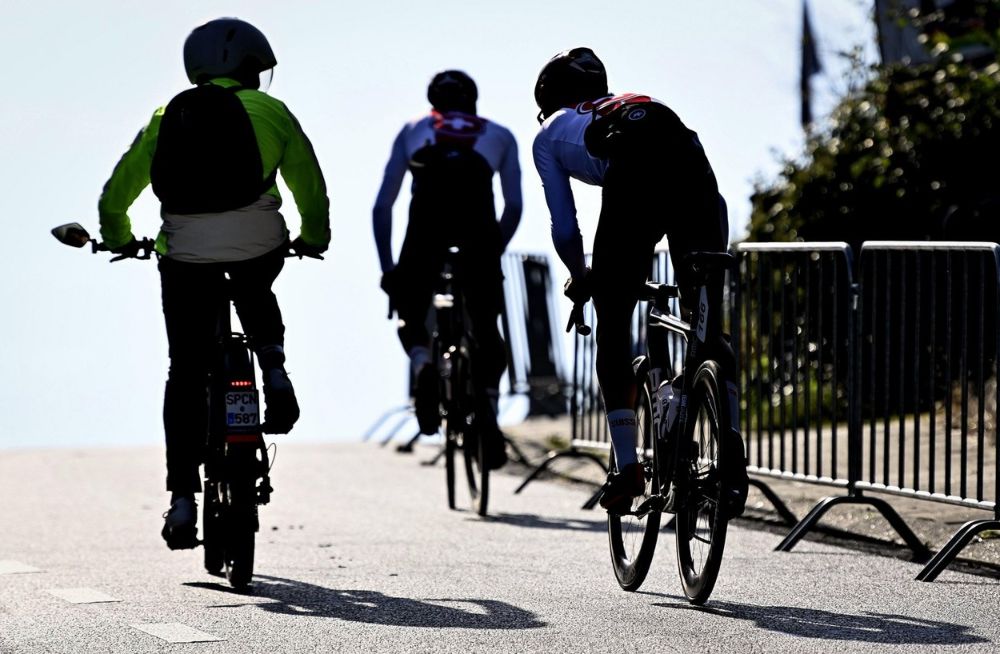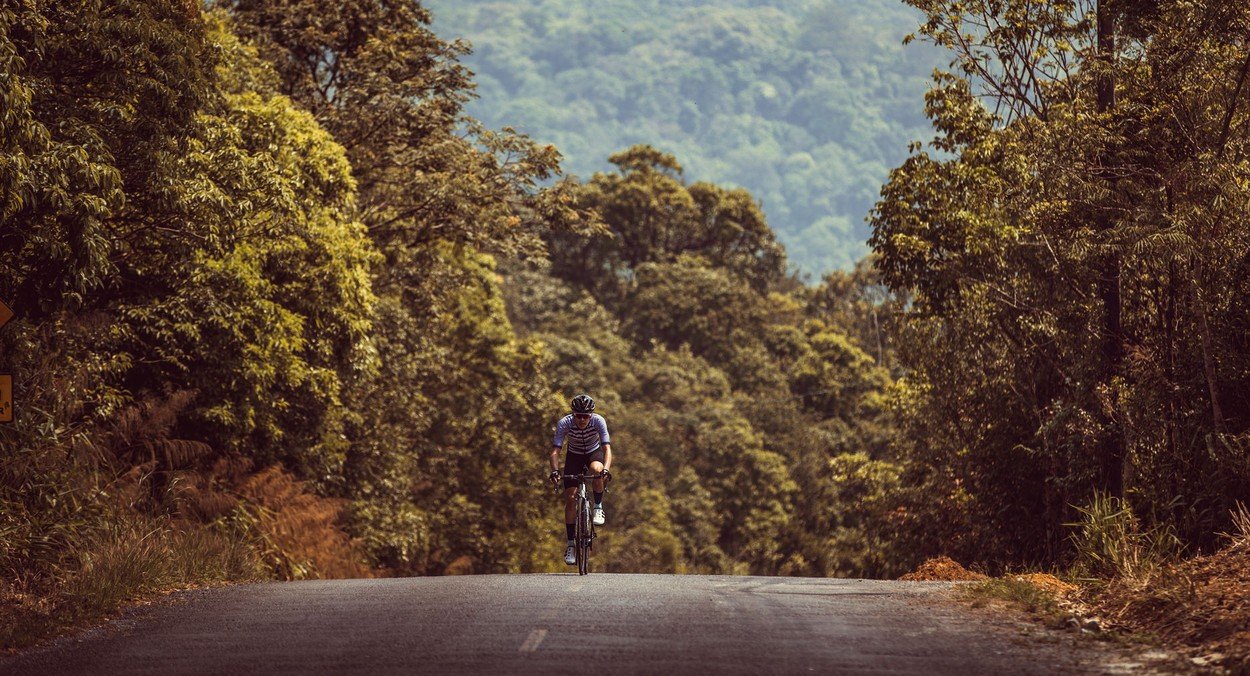Between 20 and 30 hours every week
Many professional cyclists publicly share their training logs on platforms such as Strava. So, it’s not too difficult to find out how much time they spend in the saddle. Of course, it depends a lot on the individual and on the time of year but most pros fall somewhere into the range of 20-30 hours of cycling every week.

How many hours do you have?
Unless you’re a bicycle courier, 20-30 hours per week probably sounds impossible. Investing that much time would cost many amateur cyclists their job. Transitioning to be a pro means you have to sacrifice a lot before you get there. But let’s assume you had unlimited time to go cycling and train – no work, no social responsibilities, no other hobbies. There would still be a significant issue in your way.
Once you pass 15 hours of cycling per week, you get into a time range that some people simply can’t handle. Some riders simply won’t keep getting faster as they push their hours past 15 because of their ability to recover and also because of genetics. Some riders might even start falling apart and get worse if they keep increasing.

Let’s assume you’re one of the lucky ones who can handle 20-30 hours of cycling per week. Does that mean you have what it takes? Maybe. Take a look at a few examples of training sessions of professional cyclists and see for yourself.
How does the 4-time Tour de France winner, Chris Froome, train?
If you’ve been reading this series, you know that the number of hours doesn’t tell the whole story. The intensity at which you ride matters a lot. Take a look at this massive ride Chris Froome posted on Strava when training in the French Alps to truly understand it.
Chris rode 237,2 km in a time of 8:41.03, climbing 11 mountain passes with a total of 5,161 meters of elevation. He managed to average power of 200 watts, peaking at 1,209 watts. Of course, he doesn’t do sessions like this every day. But still, makes you think twice before quitting your day job and going pro.
https://www.instagram.com/p/CQBylbGnfjE/
How does an Olympic MTB cyclist, Ondřej Cink, train?
If you think that MTB cyclists have an easier time, get ready for a surprise. Check out this training ride from Ondřej Cink, the Under-23 cross country world champion. He was training in Les Gets, France, where he also placed 2nd in a World Cup this year.
Ondřej managed to cram in 2,073 meters of elevation into a 56,1-km-long ride he completed in 2:51:08. And he averaged 299 watts! Would you also smile like this after that type of training?
https://www.instagram.com/p/CQqgI-JLUP7/
Follow the example of the iconic sprinter Peter Sagan
Even sprinters have to put in the hours. Here is a quote from Peter Sagan’s coach that is quite revealing: “February is the biggest training month of the year for us when weekly volume peaks at 32-35 hours.” You can check out the training routine of Peter Sagan in our previous article.
Get some training tips from a Tour de France champion Andy Schleck
If you’re starting to lose hope of becoming a pro, perhaps it’s time to look at how the Tour de France champion in retirement, Andy Schleck, trains. We interviewed him earlier this year and he offered a lot of great training tips to help you enjoy cycling even after your professional career is done.








